Arctic Coasts, Rivers and LakesThe islands of the Arctic have extensive shorelines that are, or have been, heavily influenced by glaciers, rivers which supply large amounts of sediment, and by sea ice which churns up the beaches when it breaks up in spring. Many small lakes also occur, again commonly influenced by glaciers and rivers. Here are a collection of images that illustrate the dynamic nature of these environments. |
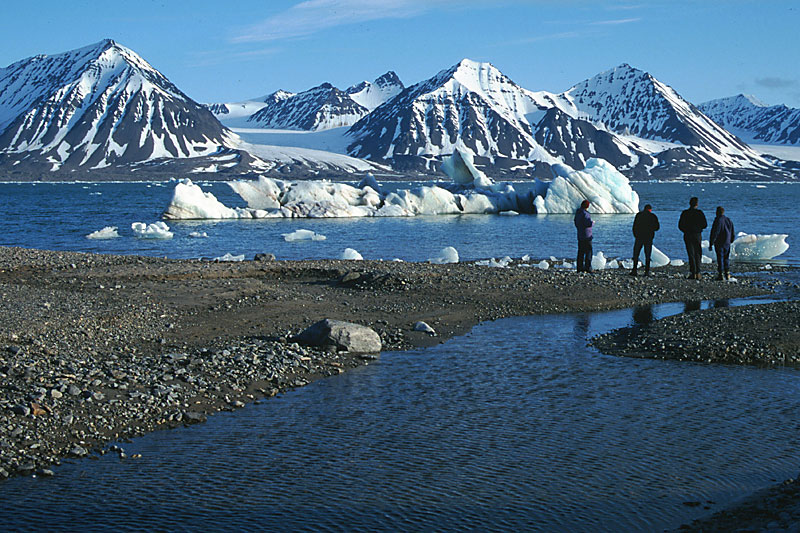 The coastal zone of Arctic areas such as Kongsfjorden, north-west Spitsbergen, as depicted here, are full of interest. Here, a sizeable iceberg is drifting past the four onlookers as bergy bits litter the gravel shore amongst their feet. | 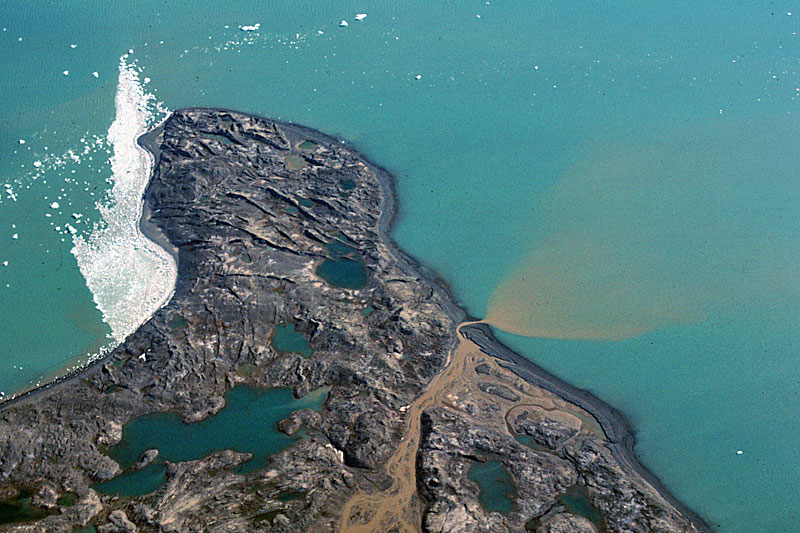 Aerial view of sediment-laden meltwater stream flowing into Kongsfjorden, NW Spitsbergen. The meltwater spreads out on the sea-surface because it is less dense than the saline marine water. Small, isolated lakes are also present on the peninsula, and sea ice has been piled up against its shore by the wind. | 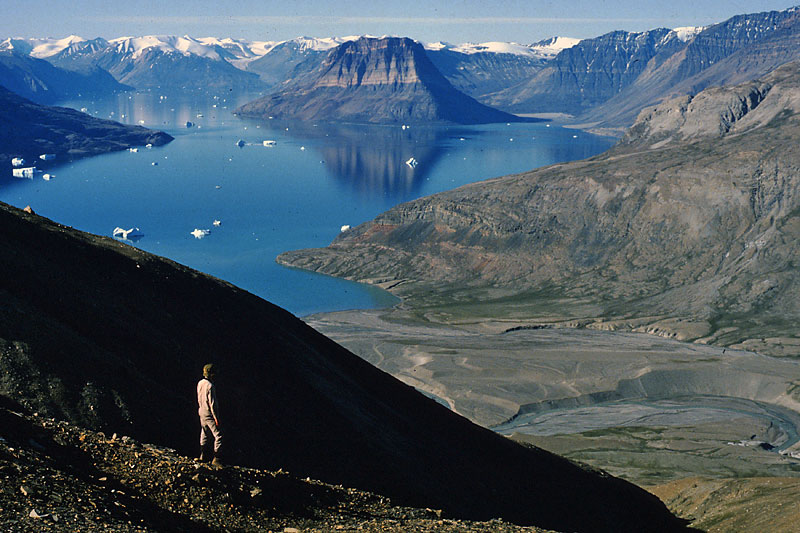 Fjords are among the most dramatic effects of glaciation, extending, as with Kejser Franz Josef Fjord in East Greenland, more than a hundred kilometres inland. This view shows icebergs drifting from the distant glaciers at the head of the fjord. | 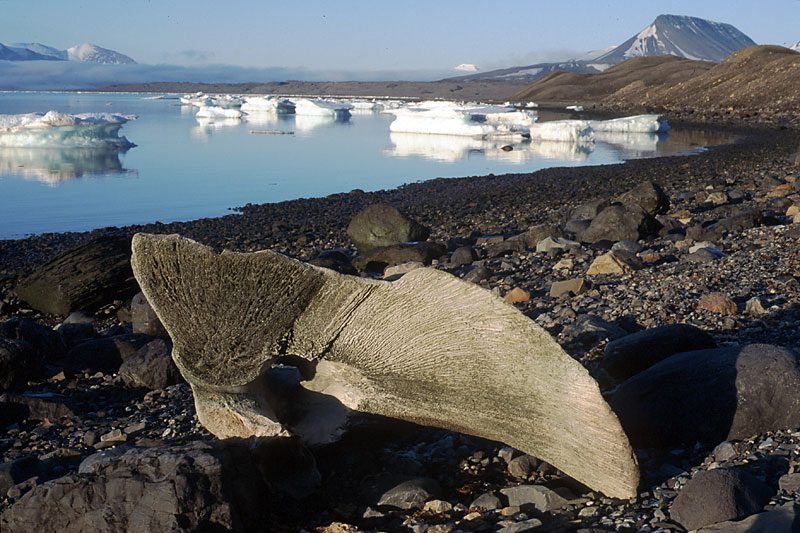 Commercial exploitation of whales in the Arctic during the 17th to 19th centuries has rendered them largely extinct, and the remains litter the beaches of Svalbard to this day. This example of part of a whale skeleton lies on the southern shore of Van Keulenfjorden in south-central Spistbergen. |
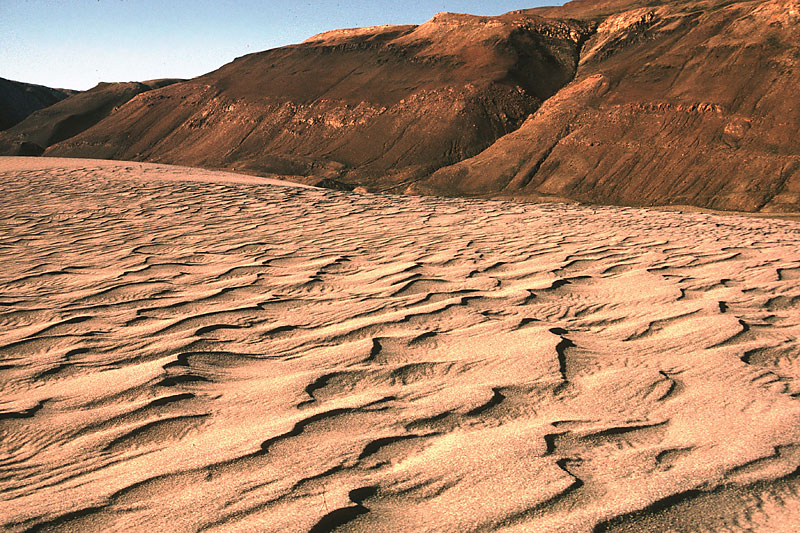 Glacial rivers carry a large amount of sediment to the coast. The finer materials may be subject to reworking by other processes such as wind. Here we see an inland sand-dune system derived from the fine sediment in glacial meltwater at Albert Heim Bjerg in East Greenland. | 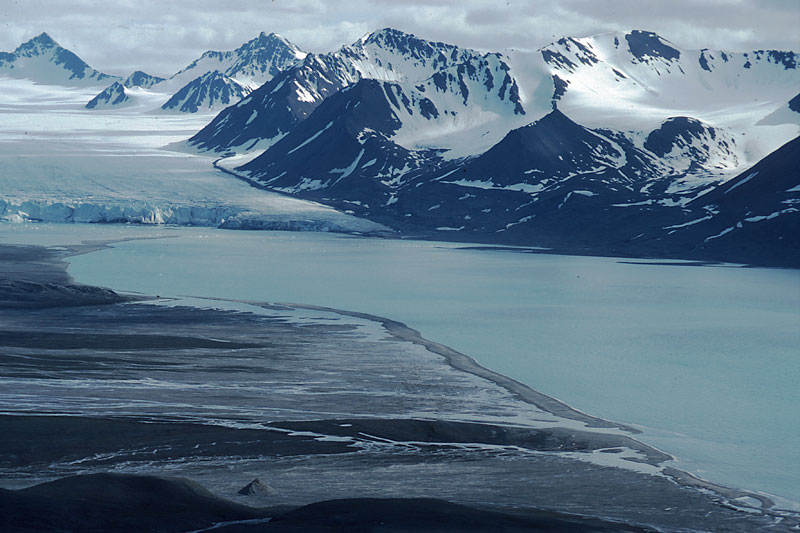 Dynamic Arctic coast at Engelskbukta in NW Spitsbergen. The glacier at the head, Comfortlessbreen, supplies a lot of sediment directly or in suspension, while the river from another glacier in the foreground delivers fluvial material. It is reworked by waves and coastal currents, producing beach bars and spits. | 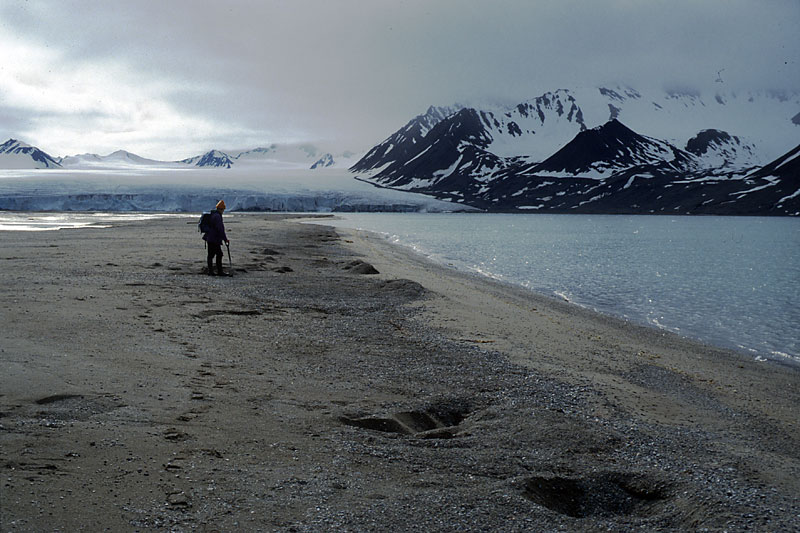 Close-up view of the shoreline of Engelskbukta shown in the previous feature, illustrating the shingle beach. The pits were formed by the melting out of sea ice floes or small icebergs after burial by sediment, and are a common feature of Arctic shorelines. | 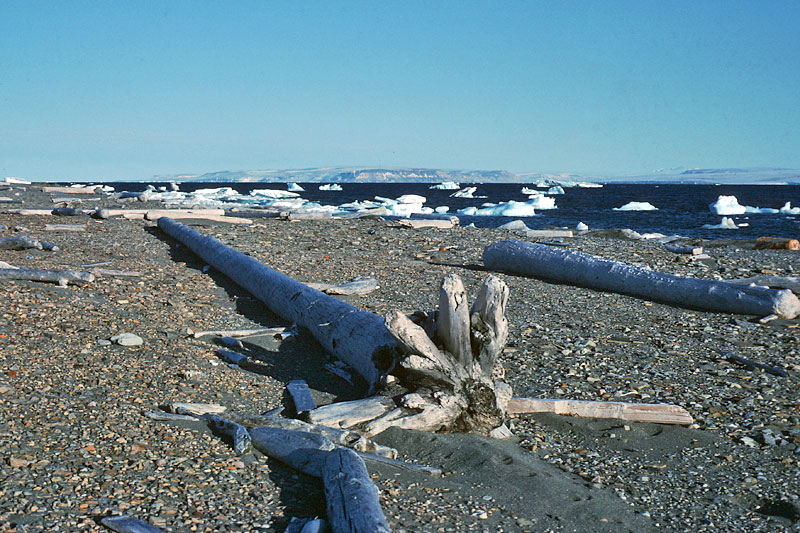 Driftwood of tree-trunk proportions litters many Svalbard beaches. The logs in this photograph lie on a beach on Nordaustlandet bordering the strait of Hinlopenstretet, and are derived originally from Siberian rivers, but transported here in the pack ice of the Arctic Ocean. |
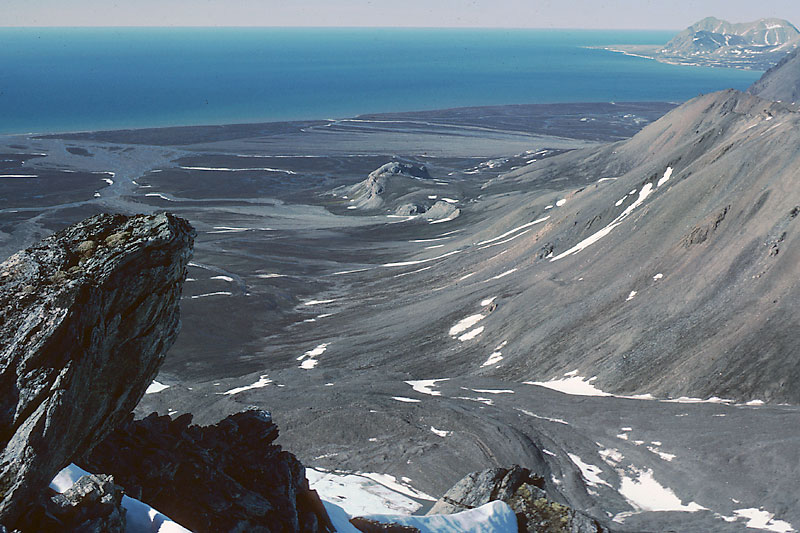 Flat coastal plains, criss-crossed by glacial rivers, are known as strandflats, and are common features of western and northern Spitsbergen. This view shows a 3 km-wide strandflat along the coast of Oscar II Land to the south of Engelskbukta. | 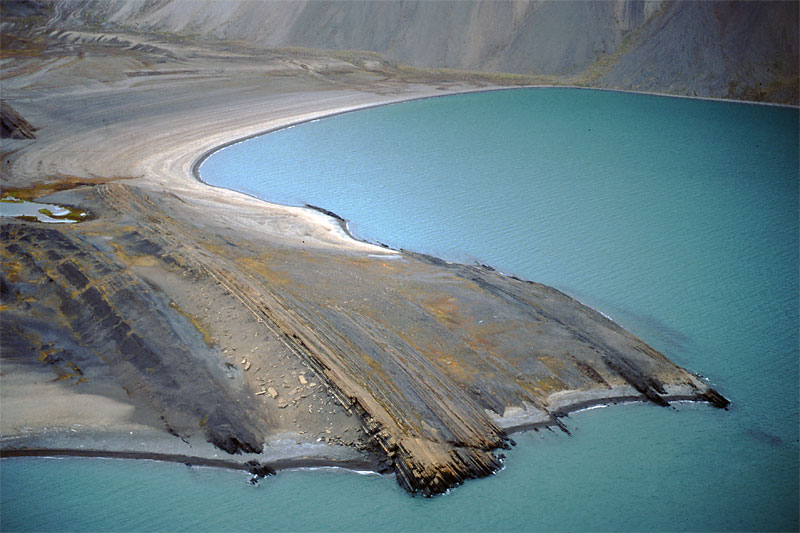 Raised beaches are a feature of areas that have 'rebounded' following the removal of the ice-load during deglaciation. The bay (upper right) has a regular set of raised beaches, which appear, coincidentally, to line up with the titled rock strata in the foreground (Van Keulenfjorden, Spitsbergen. | 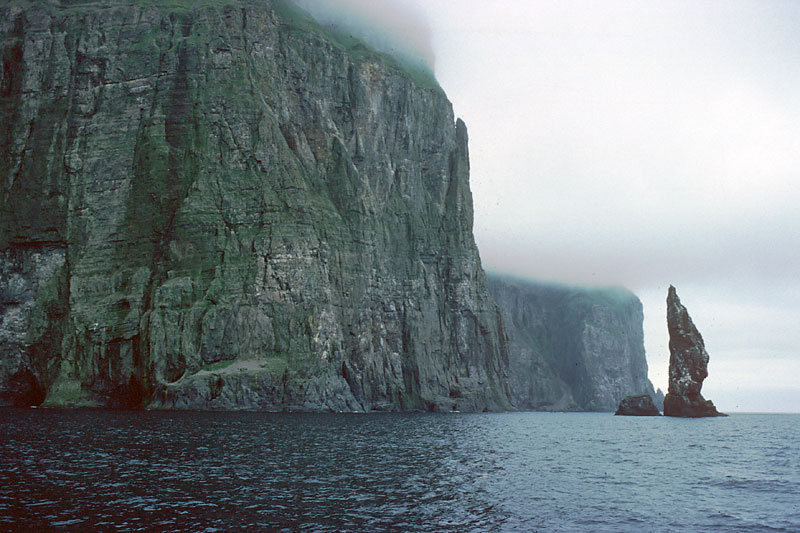 Bjřrnřya (Bear Island) is a small remote island in the Barents Sea, and displays a fine set of 400 m-high cliffs and sea stacks, rising up into the clouds that almost perpetually shroud this area in summer. | 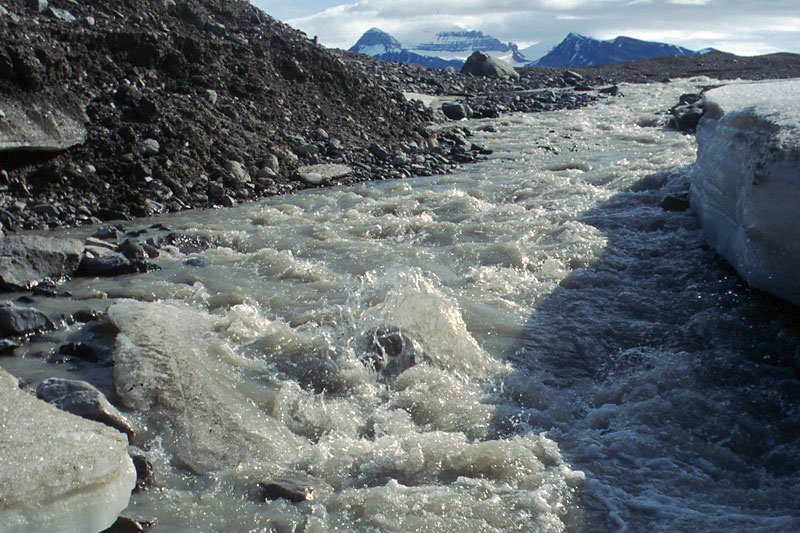 Winter icings or Aufeis constrain the flow of this river of glacial and snow meltwater that flows in a small valley between the large lateral moraine of Kongsvegen (left) and the valley side, NW Spitsbergen. |
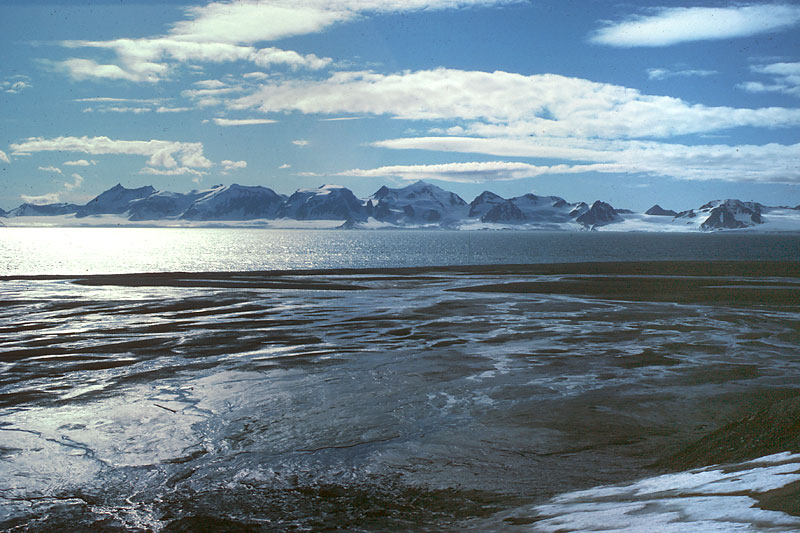 During the early summer, when snow-melt is at its peak, and the glaciers are beginning to melt, braided rivers become very full and often impassable. This river emerges from the large outlet glacier Aavatsmarkbreen, on the west coast of Spitsbergen, opposite the heavily ice-covered island of Prins Karls Forland. | 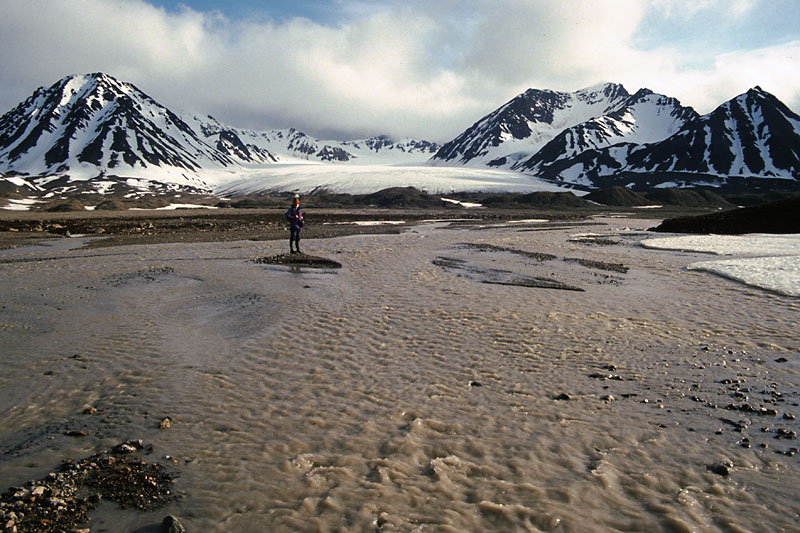 Crossing braided rivers requires skill, as the straight line approach will invariably mean wet legs. The trick is to link mid-stream bars via wide, fast-flowing shallow channel crossings. Sediment-laden braided river from Midre Lovénbreen in north-west Spitsbergen. | 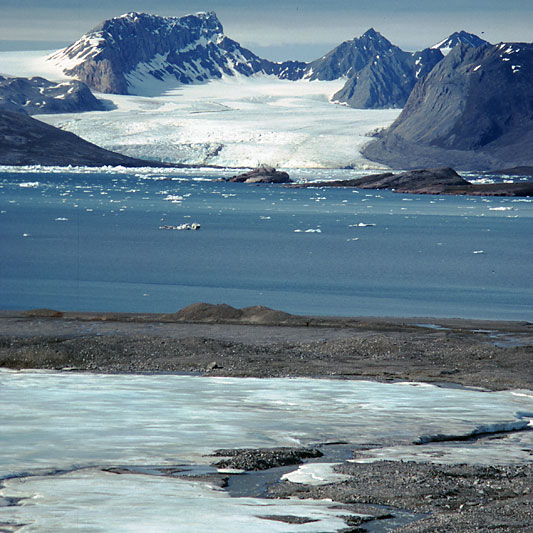 A common feature of High Arctic glaciers is the continued slow release of stored meltwater onto the braided river plain in front after the winter freeze has begun. As a result, thick masses of candle ice called Aufeis build up during the winter, often to a depth of two metres (Midtre Lovénbreen in NW Spitsbergen). | 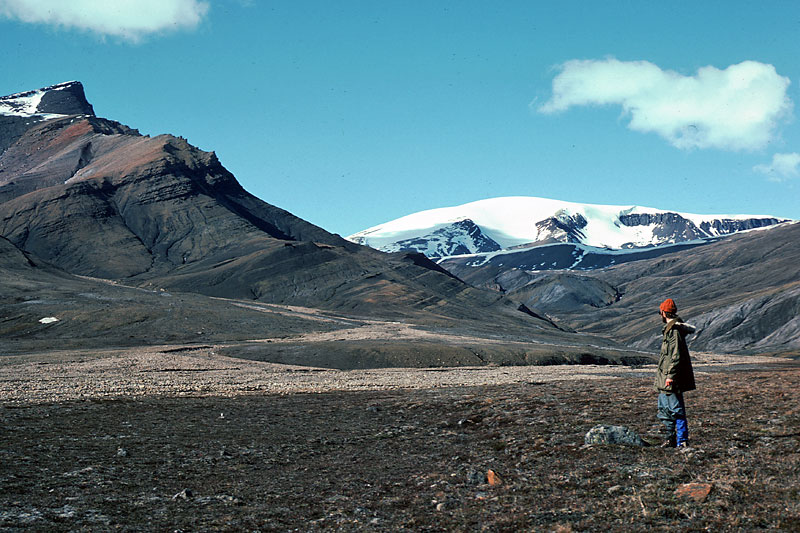 Early summer snow-melt results in much erosion and redeposition of sediment by streams. Over the years, alluvial fans build up, as here below a gully on Wolf Mountain, Axel Heiberg Island. |
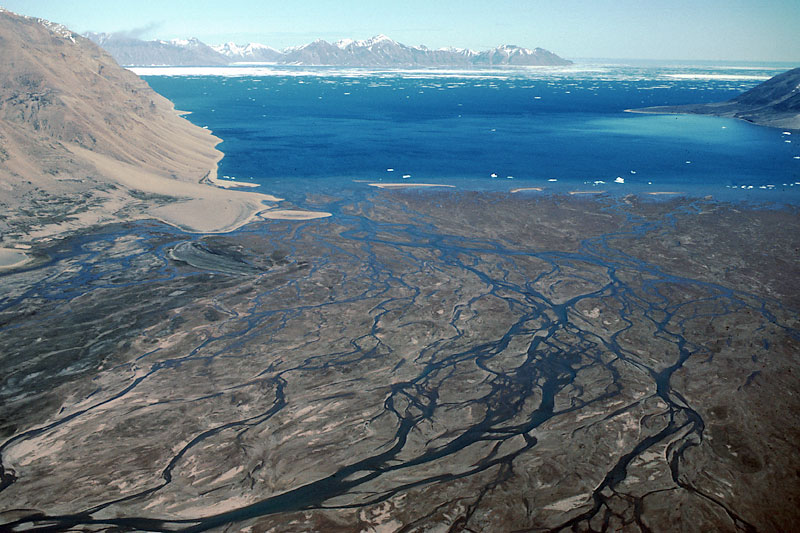 Braided rivers contain channels that are actively changing right across the valley floor. As they enter the sea the sediment is largely deposited and a delta builds out from the coast. Often these deltas form in embayments previously carved out by the ice (Jameson Land, East Greenland). | 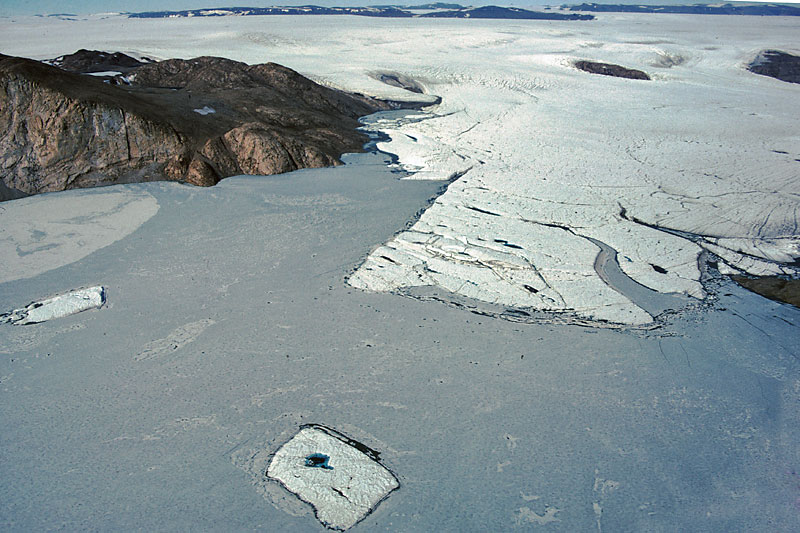 Glacier-dammed lakes are a common feature of Arctic glaciers. Here a branch of an outlet glacier of the Greenland Ice Sheet in East Greenland, called Dödemanns Gletscher (Dead Dog Glacier) has dammed a small frozen lake. Tabular icebergs are breaking off from the floating glacier tongue. | 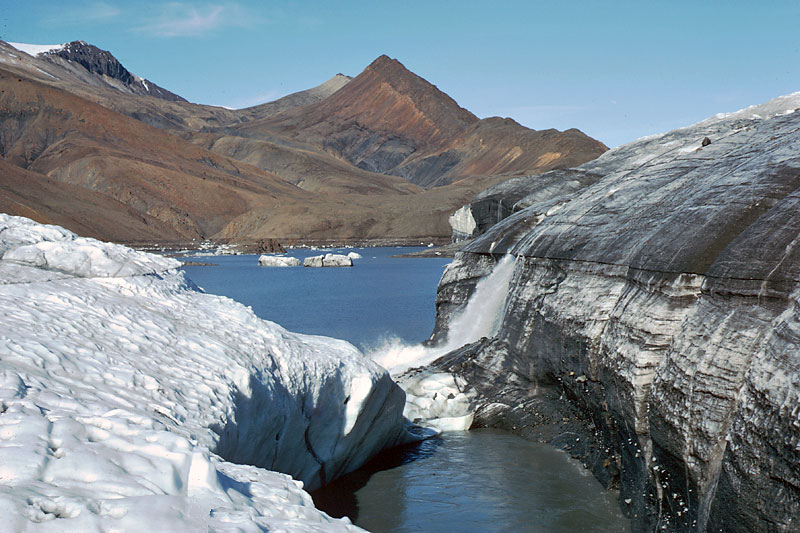 Glacier-dammed lakes commonly drain every summer in catastrophic fashion. Here, Between Lake sandwiched between two converging glaciers on Axel Heiberg Island, the White on the left and Thomsen on the right is in the process of draining, and the high-water mark is clearly visible at the level of the top of the waterfall. | 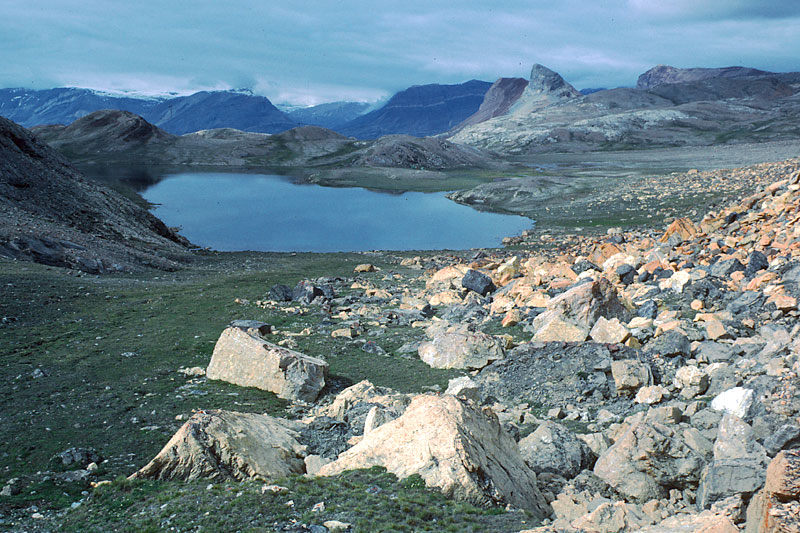 A fresh-water lake on Ymer Ř, East Greenland, fed only by snow-melt, occupies a rock basin calved out by glaciers flowing from the mainland peaks in the background. The clear fresh water provides an ideal habitat for Arctic char, while the shores bear a diverse flora and fauna. |
| Photos: Michael Hambrey |